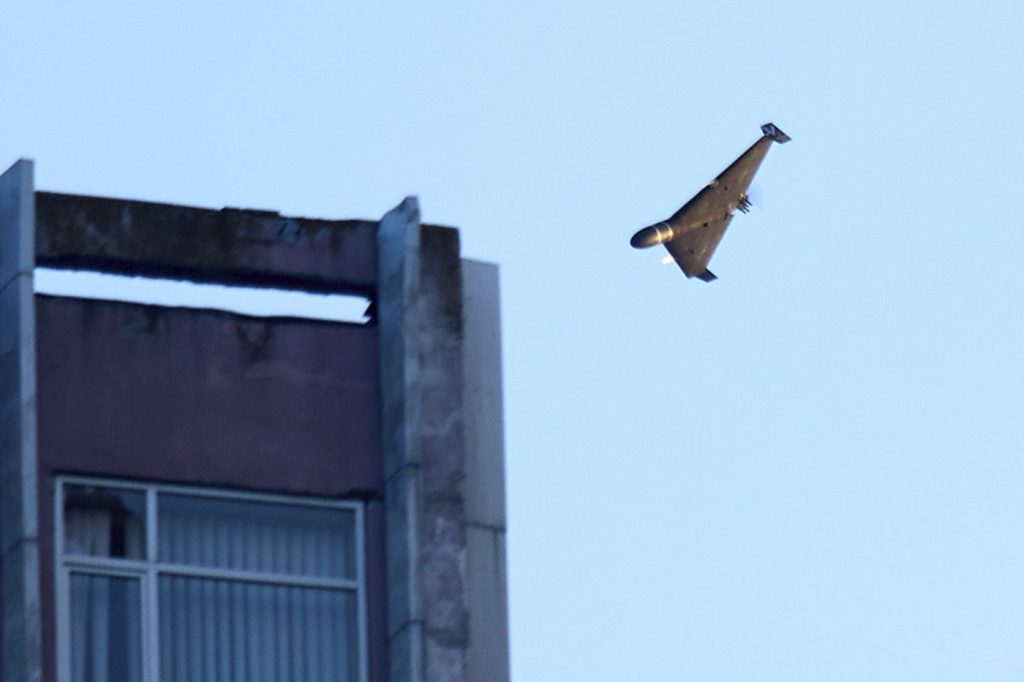The conflict in Ukraine has escalated significantly as Russia implements an intense drone warfare strategy. Each night, long-range Russian drones swarm over Ukraine, launching attacks from the eastern front to regions close to Poland, creating widespread fear among the civilian population. Analysts note that Russia is consistently deploying larger numbers of drones, with a record of over 700 drones launched on July 8, 2024, and potential projections suggesting this number could exceed 1,000 daily.
This surge in drone attacks coincides with U.S. President Donald Trump's ultimatum for Russia to secure a ceasefire by early September or face new sanctions. Consequently, Moscow is likely utilizing this time frame to maximize damage on Ukrainian targets. Russia is not only increasing its drone output but also expanding its domestic production capabilities. Initially reliant on Iran for Shahed drones, Russia has modified the designs and is ramping up local manufacturing.
The Russian Defense Ministry is establishing a separate branch for its drone forces and has set up a center focused on enhancing drone tactics and pilot training. Modifications to the original Iranian Shahed drones, now termed "Geran" in Russia, include higher altitudes for evasion and jamming resistance, with some versions utilizing artificial intelligence for autonomous operation. These drones have an operational speed exceeding 180 kilometers per hour and are capable of carrying substantial payloads, raising their effectiveness in targeting Ukrainian infrastructure.
The Institute for the Study of War highlights that Russia's collaboration with China has circumvented Western sanctions, with Ukrainian military intelligence estimating that 65% of the components for Geran drones are sourced from China, a claim that Beijing has denied. Production began in Tatarstan's Alabuga factory, which has been described as the world’s largest attack drone facility. Despite Ukrainian attempts to sabotage the factories, production has not been significantly interrupted.
Russian military tactics have evolved, now incorporating decoy drones known as "Gerbera" to mislead Ukrainian defenses. By overwhelming air defenses through sheer numbers, Russia aims to conserve its more expensive cruise and ballistic missile resources. Former defense officials assert that the military has fine-tuned its strategy to concentrate attacks on specific targets and maximize their impact, employing drones that can circulate in Ukrainian airspace for extended periods.
Ukraine has responded with low-cost countermeasures, deploying mobile teams armed with machine guns to target drones, alongside developing its own interceptor drones. However, the continuous rise in Russian drone attacks is exerting pressure on Ukraine's defenses, particularly regarding sophisticated air defense systems.
Despite facing international sanctions, Russia's military budget has seen a 3.4% increase in 2024, estimated at around $200 billion. The Kremlin maintains that such spending remains manageable amid economic pressures. President Vladimir Putin revealed that over 1.5 million drones were delivered to the military the previous year. The sheer cost-effectiveness of these drones, as cited by the Center for Strategic and International Studies, underlines their role as the most economically viable form of weaponry in Russia's arsenal.
Ukrainian President Volodymyr Zelenskyy expressed concerns about Russia’s intent to intimidate the Ukrainian populace through these drone campaigns. With aspirations to launch up to 2,000 drones in a single assault, this tactic significantly alters the battlefield dynamics. Russian drone units are now under centralized command, and there are plans to establish Unmanned Systems Troops as a distinct military branch.
Innovative battlefield drones utilizing fiber optic cables have emerged, which are immune to jamming and significantly extend operational range. This advancement presents new challenges for the Ukrainian military, requiring it to reconsider its defense strategies. Notable military analysts emphasize the need for Ukraine to enhance the depth of its defenses to mitigate the impacts of these aerial assaults.










